
The Constitution is on hemp paper
The Constitution, as well as the Declaration of Independence, are on parchment, not hemp paper. According to the National Constitution Center, the myth stems from the fact that some of the unofficial, working drafts of both documents might have been on paper made from hemp since it was a common type of paper during that time. Here are 15 other facts about America you never learned in school.

The Constitution has 39 signatures
Technically, there are 39 delegate signatures on the Constitution. The Convention’s secretary William Jackson, however, also signed the document for authentication. Knew this one already? Test your knowledge with this Constitutional Amendments quiz.
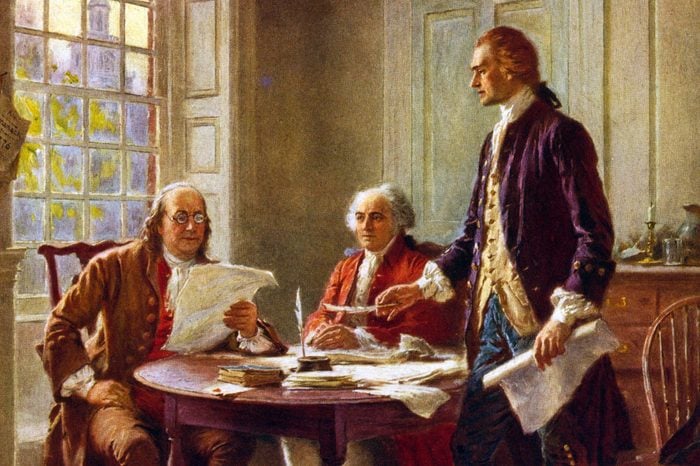
Thomas Jefferson and John Adams signed the Constitution
Both Jefferson and Adams were out of the country, so neither signed the Constitution. Jefferson was in France and Adams was in Great Britain at the time of the Convention.
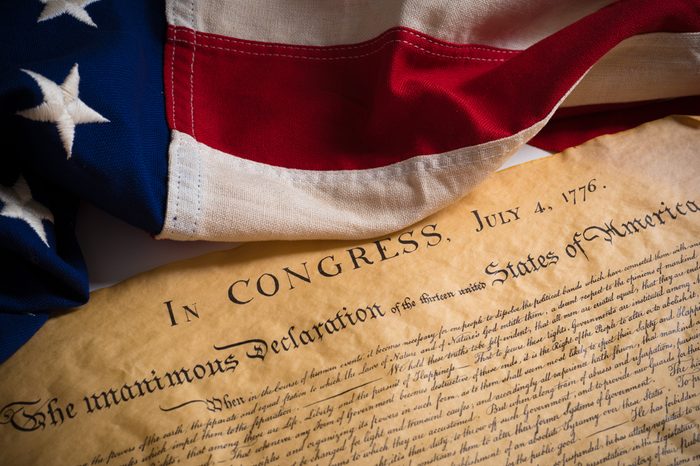
The same signatures are on both the Declaration of Independence and the Constitution
The two documents only have six names in common—George Clymer, Benjamin Franklin, Robert Morris, George Read, James Wilson, and Roger Sherman, the U.S. National Archives reports. These are the differences between the Declaration of Independence and the Constitution.
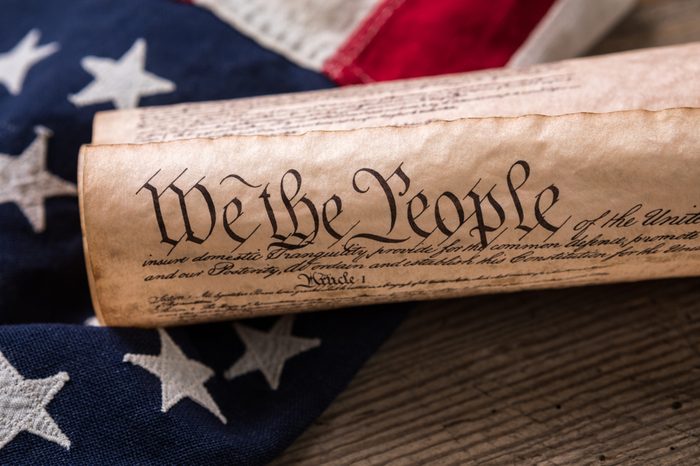
The Constitution established an American democracy
The Constitution created a republic, not a democracy. Although in both cases the people elect the government, under a republic the elected party under has checks and balances. Someone asked Benjamin Franklin whether the delegates at the Constitutional Convention (inside Independence Hall in Philadelphia) had created a monarchy or a republic. His response? “A republic, if you can keep it,” he said.

All 13 states participated in writing the Constitution
Although there were 13 states in 1787, Rhode Island didn’t send a delegation to Philadelphia. The small state thought the new federal government would dominate them. The state even rejected the ratification of the Constitution in 1788 but finally approved it in 1790—by two votes, per the National Constitution Center. Apparently not one state thoroughly proof-read it, though—here are 13 grammar errors found in the Constitution.
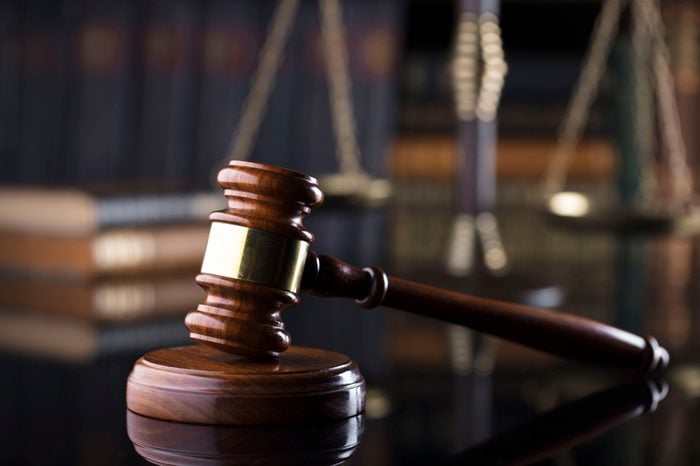
The President can veto a proposed amendment to the Constitution
Presidents can’t propose, ratify, or veto an amendment. Although the president can’t technically introduce one, they can lobby on behalf of those they support, and sign them as a witness. According to the U.S. National Archives, Congress or a constitutional convention propose amendments. Here’s what happens if a President refuses to leave office.
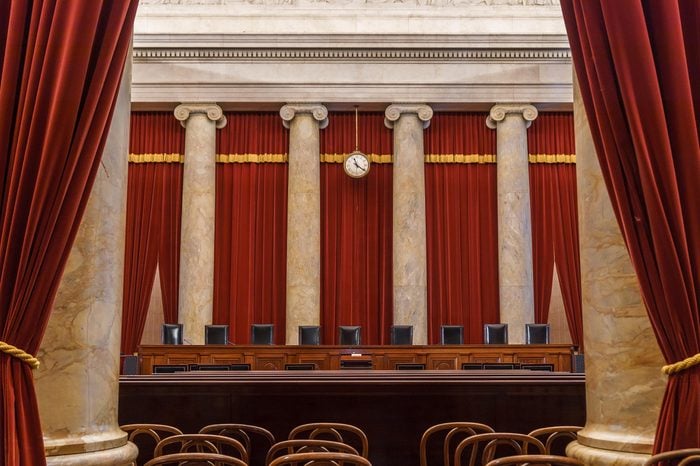
The Constitution gives the Supreme Court the power to declare laws unconstitutional
The Constitution doesn’t actually mention judicial review. Even though it is not explicitly in the document, the founding fathers anticipated the adoption of the practice well before the adoption of the Constitution. Plus, the importance of judicial review is in The Federalist Papers. The Supreme Court Justices’ lifetime appointments probably come from the Constitution, though.

The Constitution explicitly states there is a separation of Church and State
No, you won’t find the phrase, “separation of Church and State,” in the Constitution. That said, Article VI of the Constitution grants that, “No religious test shall ever be required as a qualification to any office or public trust under the United States.” Similarly, the First Amendment to the Constitution states that “Congress shall make no law respecting an establishment of religion.” Those statements, plus Supreme Court rulings in cases such as Everson v. Board of Education, do separate Church and State. Check out these other facts and figures from the Constitution.
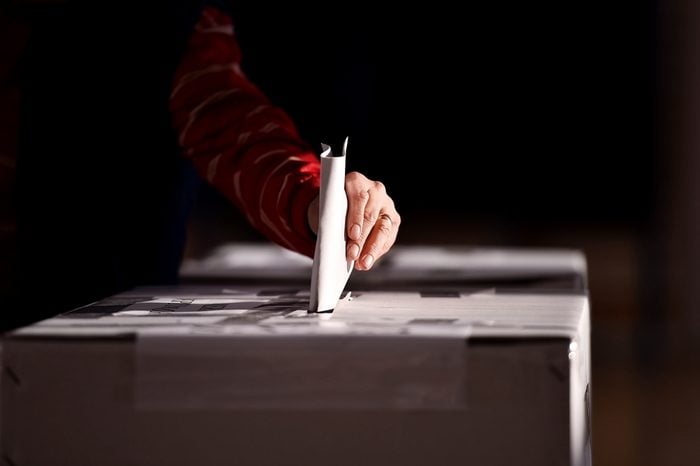
The Constitution ensures your right to vote
The Constitution has lots of language detailing the reasons why you can’t be denied the right to vote. Meaning, unlike free speech, the Constitution never really ensures your right to vote—it only states the particular reasons why you can’t be denied. Therefore, withholding the right to vote is OK, so long as the reasoning doesn’t conflict with the Constitution. For example, you can’t be denied the right to vote because of gender or a lack of poll tax payment. But 21 states, such as Minnesota and New York, currently deny felons the right to vote while incarcerated and until after their parole or probation has ended. Now that you know what facts to believe, find out what happens within the first 100 days of a new President taking office.
Sources:
- National Constitution Center: “Busting some myths about the Founding Fathers and Marijuana”
- National Constitution Center: “Founding Fathers”
- Heritage.org: “Attestation Clause”
- National Constitution Center: “The Constitution of the United States: Fast Facts”
- National Constitution Center: “Perspectives on the Constitution”
- National Constitution Center: “Five ‘unusual’ amendments that never made it into the Constitution”
- Archives.gov: “Constitutional Amendment Process”
- SupremeCourt.gov: “The Court and Constitutional Interpretation”
- Cornell Law School: “U.S. Constitution, Article VI”
- Cornell Law School: “U.S. Constitution, First Amendment”
- National Conference of State Legislators: “Felon Voting Rights”
